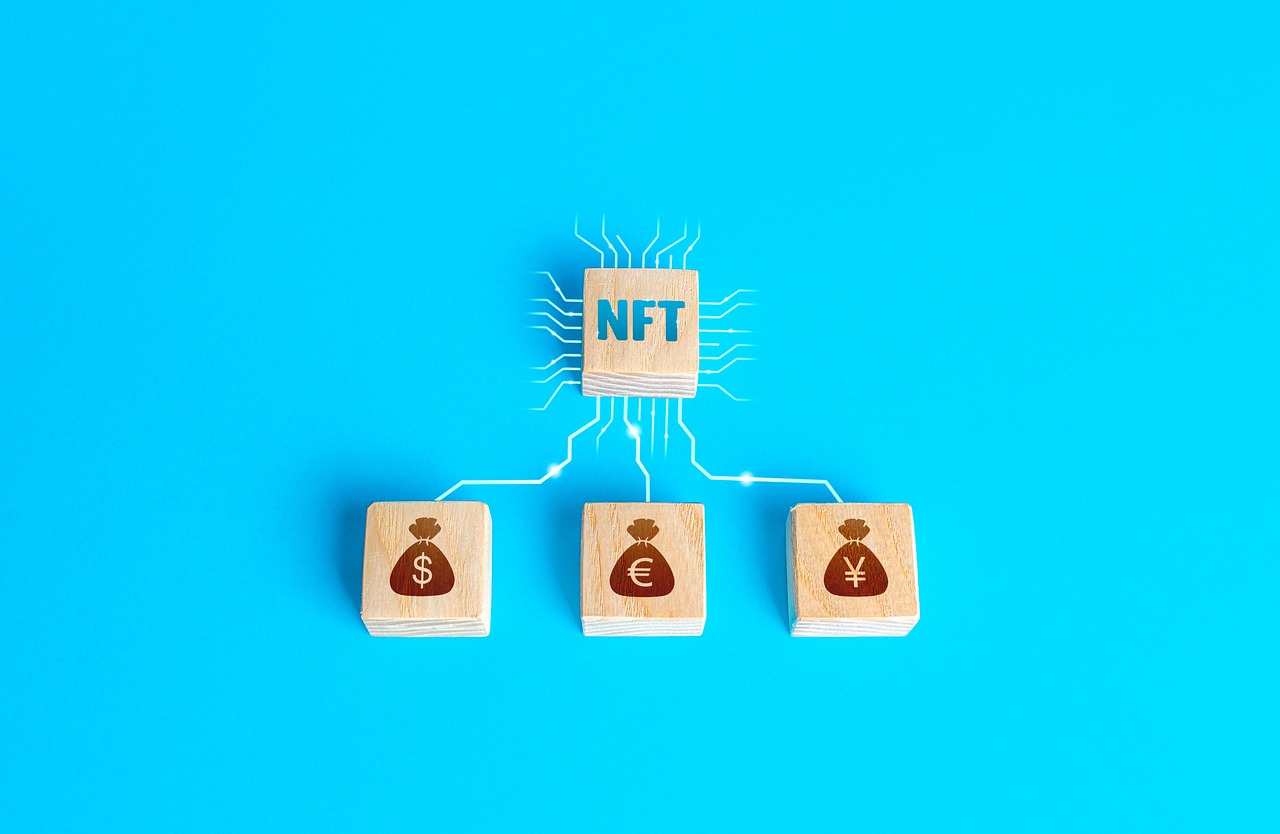Evaluating the Performance of DeFi Tokens in 2025
The world of decentralized finance (DeFi) is buzzing with excitement as we approach 2025. If you're like many investors and crypto enthusiasts, you're probably wondering, "What does the future hold for DeFi tokens?" Well, you're in the right place! This article dives deep into the anticipated performance of these tokens, examining various trends, market dynamics, and factors that will influence their growth and adoption in this rapidly evolving crypto landscape.
As we stand on the brink of a new era in finance, the DeFi sector has already made significant strides. From lending platforms to decentralized exchanges, these tokens have transformed how we think about financial transactions. But what can we expect as we move forward? The answer lies in understanding the current state of DeFi tokens, the market trends shaping their future, and the strategies investors can adopt to navigate this complex ecosystem.
In the coming sections, we will explore the current landscape of DeFi tokens, including their market capitalization and the leading projects that have captured investor interest. We'll also discuss the emerging trends that are likely to shape the DeFi sector, such as regulatory changes and technological advancements. Moreover, we'll take a closer look at the potential challenges and opportunities that lie ahead.
So, whether you're a seasoned investor or just starting your journey into the world of DeFi, this comprehensive evaluation will equip you with the knowledge you need to make informed decisions. Ready to dive in? Let’s go!
The DeFi token landscape is vibrant and diverse, with a market capitalization that has soared to impressive heights. As of now, the total market cap of DeFi tokens is estimated to be in the tens of billions of dollars, showcasing a robust ecosystem that continues to attract new participants. Leading projects like Uniswap, Aave, and Chainlink have established themselves as frontrunners, each bringing unique solutions to the market.
But what exactly does the health of the ecosystem look like? The DeFi space is characterized by rapid innovation and a high degree of volatility. While this presents opportunities for substantial gains, it also raises questions about sustainability. As we approach 2025, it’s crucial to keep an eye on how these tokens perform in relation to traditional financial systems and the broader cryptocurrency market.
Several key trends are expected to influence the DeFi sector in the coming years. One of the most significant factors is the evolving regulatory landscape. As governments around the world begin to implement regulations for cryptocurrencies, the DeFi market will have to adapt. This could lead to both challenges and opportunities for growth, as projects that prioritize compliance may gain a competitive edge.
Regulatory frameworks can be a double-edged sword. On one hand, they can provide legitimacy and security to the DeFi space, attracting institutional investors and mainstream adoption. On the other hand, overly stringent regulations could stifle innovation and limit the growth potential of DeFi tokens. Understanding these dynamics will be crucial for anyone looking to invest in this sector.
Different countries are taking varied approaches to regulating DeFi. For instance, while some nations are embracing the technology and creating favorable environments, others are imposing strict regulations that could hinder growth. This disparity creates a complex global landscape where DeFi projects must navigate varying rules and compliance requirements.
As the regulatory environment evolves, so too will the tools available for ensuring compliance. Projects that invest in robust compliance solutions will likely find themselves in a stronger position to thrive. These tools not only help navigate legal hurdles but also build trust with users, which is paramount in the DeFi space.
Technological advancements are another driving force behind the DeFi sector. Innovations like layer-2 solutions and interoperability protocols are set to enhance scalability and user experience. As these technologies mature, they will likely lead to increased adoption of DeFi tokens, making it essential for investors to stay informed about the latest developments.
With the landscape shifting, having a solid investment strategy is more important than ever. Diversification is key; spreading your investments across various DeFi tokens can help mitigate risks associated with volatility. Additionally, understanding risk management techniques will prepare you for the unpredictable nature of the crypto market.
Investing in DeFi tokens is not without its risks. Factors like market manipulation, security vulnerabilities, and overall market volatility can significantly impact your investments. Conducting thorough research and assessing these risks will empower you to make smarter investment choices.
When looking for DeFi tokens with strong growth potential, consider evaluating the fundamentals of the project, the expertise of the team behind it, and the level of community engagement. A passionate community can often indicate a project’s potential for success.
As we look toward 2025, the future of DeFi tokens is both exciting and uncertain. While we can anticipate increased user adoption and market evolution, challenges such as regulatory hurdles and technological limitations may arise. However, with the right strategies and insights, investors can position themselves to take advantage of the opportunities that lie ahead.
- What are DeFi tokens? DeFi tokens are cryptocurrencies that are used within decentralized finance platforms to facilitate financial services like lending, borrowing, and trading without intermediaries.
- How can I invest in DeFi tokens? You can invest in DeFi tokens through various cryptocurrency exchanges or directly on DeFi platforms by swapping other cryptocurrencies.
- What are the risks associated with DeFi investments? Risks include market volatility, security vulnerabilities, and potential regulatory challenges.
- What should I look for in a DeFi project? Evaluate the project's fundamentals, team expertise, community support, and technological advancements.

Current State of DeFi Tokens
The world of decentralized finance (DeFi) is a vibrant and rapidly evolving landscape, where innovation meets opportunity. As we stand on the brink of 2025, it's essential to take a closer look at the and understand the dynamics that shape their market. At present, the DeFi sector boasts a market capitalization that has surged into the hundreds of billions, showcasing a robust ecosystem filled with potential. Leading projects like Uniswap, Aave, and Compound have become household names, driving significant liquidity and user engagement.
The health of the DeFi ecosystem can be gauged by several key metrics, including total value locked (TVL), user adoption rates, and the diversity of projects. Currently, the TVL in DeFi protocols has reached impressive heights, indicating that users are increasingly trusting these platforms for their financial needs. The rise of yield farming and liquidity mining has attracted both seasoned investors and newcomers alike, eager to capitalize on the lucrative opportunities that DeFi offers.
However, it's not all sunshine and rainbows. The DeFi market is also marked by volatility and risks that can catch investors off guard. Security vulnerabilities have led to several high-profile hacks, raising questions about trust and reliability in the sector. As we approach 2025, the need for robust security measures and transparent practices will be paramount to ensure the sustainability of DeFi tokens.
To illustrate the current landscape, let's take a look at a table summarizing some of the leading DeFi tokens and their respective market capitalizations:
| Token Name | Market Capitalization (USD) | Current Price (USD) |
|---|---|---|
| Uniswap (UNI) | $7 Billion | $15.00 |
| Aave (AAVE) | $4 Billion | $200.00 |
| Compound (COMP) | $2 Billion | $60.00 |
| Yearn Finance (YFI) | $1.5 Billion | $30,000.00 |
As we analyze these figures, it's clear that while some projects have established themselves as leaders, the DeFi space is still ripe for innovation and disruption. New players are emerging, offering unique solutions that challenge the status quo. In this dynamic environment, staying informed and adaptable is crucial for anyone looking to navigate the DeFi landscape effectively.
In conclusion, the current state of DeFi tokens is a mix of promise and peril. With a growing user base and increasing capital flow, the sector is poised for further growth. However, investors must remain vigilant and informed, as the landscape can change overnight. As we look ahead to 2025, understanding these nuances will be essential for anyone looking to capitalize on the DeFi revolution.

Market Trends Influencing DeFi
As we venture deeper into 2025, the decentralized finance (DeFi) landscape is set to undergo significant transformations, driven by a multitude of market trends. These trends are not just ripples in the water; they are waves that could reshape the entire ecosystem. One of the most compelling trends is the increased regulatory scrutiny that is sweeping across the globe. Governments and regulatory bodies are finally starting to take notice of DeFi's rapid growth and the potential risks that come with it. This can be both a challenge and an opportunity for DeFi tokens, as projects that embrace compliance may find themselves ahead of the curve.
Another critical trend is the rise of institutional investment in DeFi. Institutional players are beginning to dip their toes into the DeFi pool, seeking higher yields and innovative financial products. This influx of capital can lead to greater stability and maturity in the market, but it also brings the potential for increased volatility as these larger players can significantly influence market dynamics.
Technological advancements are also playing a pivotal role in shaping the future of DeFi. Innovations such as layer-2 scaling solutions and interoperability protocols are set to enhance the user experience and improve transaction efficiency. As these technologies develop, they will likely attract more users to DeFi platforms, thereby increasing the demand for associated tokens. For instance, projects that successfully implement these solutions may see a surge in user activity, leading to a corresponding increase in token value.
Furthermore, shifts in investor sentiment are crucial to monitor. As more individuals become educated about DeFi and its potential benefits, we may witness a shift away from traditional financial systems toward decentralized alternatives. This transition could be likened to the gold rush of the 19th century, where early adopters reaped significant rewards while the mainstream populace remained skeptical. The key here is to identify which tokens are positioned to benefit from this evolving sentiment.
To summarize, the market trends influencing DeFi in 2025 can be encapsulated in the following key areas:
- Regulatory Scrutiny: Increased oversight could lead to both challenges and new opportunities.
- Institutional Investment: The entry of institutional players may stabilize the market while introducing volatility.
- Technological Advancements: Innovations like layer-2 solutions could enhance user experience and drive demand.
- Investor Sentiment Shifts: Growing awareness and acceptance of DeFi may lead to a significant influx of new users.
As we look ahead, it’s essential for investors and enthusiasts alike to stay informed about these trends. Understanding how they interact can provide valuable insights into which DeFi tokens might flourish in this dynamic environment. Just as a sailor must read the winds and currents to navigate the seas, so too must we keep an eye on these market trends to chart a successful course in the DeFi landscape.

Impact of Regulation
As we navigate through the intricate world of decentralized finance (DeFi), one of the most significant factors influencing the performance of DeFi tokens is the evolving landscape of regulation. The regulatory environment is akin to a double-edged sword; while it can impose constraints that stifle innovation, it can also provide a framework that fosters trust and legitimacy. In 2025, we anticipate that the regulatory scrutiny on DeFi will intensify, and this could lead to both challenges and opportunities for token performance.
One of the primary concerns surrounding DeFi is the lack of oversight, which has led to numerous scams and fraudulent projects. Regulators worldwide are becoming increasingly aware of the need to protect investors while allowing innovative financial solutions to flourish. This balancing act is crucial, as overly stringent regulations could deter developers from creating new projects, while a lack of regulation could expose investors to undue risks. For instance, countries like the United States and the European Union are actively drafting regulations that could significantly impact how DeFi projects operate.
In particular, the Global Regulatory Landscape is becoming more complex. Different countries are adopting varying approaches to regulation. Some nations, like El Salvador, have embraced cryptocurrencies and DeFi wholeheartedly, while others, such as China, have imposed strict bans. This disparity creates a patchwork of regulations that can be confusing for DeFi projects operating on a global scale. For example, a DeFi token that thrives in a permissive jurisdiction may struggle to gain traction in a region with heavy regulatory burdens.
Moreover, the development of Compliance Solutions is becoming essential for DeFi projects. Innovative tools are emerging that help these platforms adhere to regulatory standards without compromising their core principles of decentralization and user autonomy. These solutions include identity verification systems, anti-money laundering (AML) protocols, and smart contract audits. By implementing these measures, DeFi projects can build trust with users and regulators alike, potentially enhancing their market performance.
As the regulatory landscape continues to evolve, it is crucial for investors to stay informed. Understanding how regulations affect the DeFi tokens in which they invest is vital for making informed decisions. For instance, tokens that are compliant with emerging regulations may see increased adoption and stability, while those that are not could face significant challenges.
In conclusion, the impact of regulation on DeFi tokens in 2025 will be profound. The interplay between innovation and compliance will shape the future of this sector. Investors and developers alike must pay close attention to regulatory developments to navigate this dynamic landscape successfully.
- What are DeFi tokens? DeFi tokens are cryptocurrencies that are part of decentralized finance platforms, enabling users to lend, borrow, and trade without traditional intermediaries.
- How do regulations affect DeFi tokens? Regulations can either hinder or promote the growth of DeFi tokens, depending on whether they create a supportive environment for innovation or impose restrictive measures.
- What should investors consider regarding DeFi regulations? Investors should assess the compliance of DeFi projects with local regulations, as this can impact the project's legitimacy and long-term viability.

Global Regulatory Landscape
The for decentralized finance (DeFi) tokens is as dynamic as the technology itself. As we edge closer to 2025, understanding how different countries approach regulation becomes crucial for investors and developers alike. With governments worldwide grappling with the implications of blockchain technology, the rules governing DeFi are evolving rapidly. In some regions, authorities are taking a cautious approach, while others are embracing innovation, creating a patchwork of regulations that can be both challenging and beneficial.
For instance, in the United States, the regulatory environment has been characterized by a mix of clarity and uncertainty. The Securities and Exchange Commission (SEC) has been actively pursuing enforcement actions against projects it deems to be selling unregistered securities. This has led to a sense of apprehension among developers, who are concerned about compliance and the sustainability of their projects. On the other hand, the European Union is moving towards a more comprehensive regulatory framework with its Markets in Crypto-Assets (MiCA) proposal, which aims to provide clarity and foster innovation while ensuring consumer protection.
In Asia, countries like Singapore and Japan are taking a more progressive stance, encouraging DeFi innovation while implementing necessary safeguards. Singapore, for example, has established a clear regulatory framework that promotes the growth of blockchain technology without stifling creativity. Meanwhile, Japan has recognized the potential of DeFi in financial services, leading to a regulatory environment that supports experimentation and development.
However, not all countries share this enthusiasm. Some regions have imposed outright bans on cryptocurrencies and DeFi projects, citing concerns over fraud, money laundering, and financial stability. For instance, China has cracked down on crypto trading and mining, which has sent ripples through the global market. This regulatory dichotomy creates a complex environment for DeFi projects, as they must navigate these varying regulations to ensure compliance and maintain user trust.
As we look towards 2025, it is essential for DeFi projects to stay informed about the regulatory landscape in their respective jurisdictions. The ability to adapt to regulatory changes will not only dictate the success of these projects but also influence investor sentiment. Projects that prioritize compliance and transparency are likely to gain a competitive edge in the market.
In summary, the global regulatory landscape for DeFi tokens is a double-edged sword. It presents both challenges and opportunities. On one hand, stringent regulations can hinder innovation and growth; on the other, clear guidelines can foster a safer environment for investors and users. As the DeFi ecosystem continues to mature, the importance of understanding and adapting to these regulations cannot be overstated. The future of DeFi tokens in 2025 will largely depend on how well these projects can navigate the complexities of global regulations while maintaining their innovative spirit.
- What are DeFi tokens? DeFi tokens are cryptocurrencies used in decentralized finance applications, allowing users to lend, borrow, and trade without traditional intermediaries.
- How do regulations affect DeFi tokens? Regulations can impact the legality, functionality, and market acceptance of DeFi tokens, influencing their growth and adoption.
- Are all countries regulating DeFi in the same way? No, regulatory approaches vary significantly across countries, with some embracing DeFi and others imposing strict restrictions or bans.
- What should investors consider regarding DeFi regulations? Investors should stay informed about the regulatory environment in their jurisdiction and how it may affect their investments in DeFi tokens.

Compliance Solutions
In the rapidly evolving world of decentralized finance (DeFi), ensuring compliance with regulatory standards is not just a hurdle—it's a necessity. As we approach 2025, the landscape is becoming increasingly complex, and DeFi projects must navigate these waters carefully. are emerging as vital tools that can help projects align with regulations while maintaining the core principles of decentralization and user autonomy.
One of the primary challenges facing DeFi projects is the lack of a standardized regulatory framework. Different countries have different rules, and navigating this patchwork can be daunting. However, innovative compliance solutions are stepping in to bridge this gap. These solutions range from automated KYC (Know Your Customer) processes to smart contract audits that ensure transparency and security. By integrating these tools, DeFi platforms can not only comply with regulations but also build trust with their users.
For instance, many projects are adopting blockchain analytics tools that monitor transactions in real-time to detect suspicious activities. This proactive approach not only helps in adhering to anti-money laundering (AML) regulations but also enhances the overall security of the ecosystem. By utilizing such technologies, DeFi projects can demonstrate their commitment to compliance without compromising their decentralized nature.
Moreover, compliance solutions are not just about avoiding penalties; they are also about fostering innovation. By creating a compliant environment, DeFi projects can attract institutional investors who are often hesitant to engage with unregulated markets. This influx of institutional capital can significantly enhance the liquidity and overall health of the DeFi ecosystem.
To illustrate the importance of compliance solutions, consider the following table that outlines some of the leading compliance tools currently available in the market:
| Compliance Tool | Functionality | Benefits |
|---|---|---|
| Chainalysis | Transaction monitoring | Real-time detection of suspicious activities |
| Elliptic | Blockchain analytics | Risk assessment and compliance reporting |
| IdentityMind | KYC/AML compliance | Automated user verification processes |
| ComplyAdvantage | Risk management | Comprehensive risk assessment tools |
In summary, as we move towards 2025, the integration of compliance solutions in DeFi will play a crucial role in shaping the future of this sector. By embracing these tools, DeFi projects can not only ensure regulatory adherence but also pave the way for greater innovation and user trust. The road ahead may be challenging, but with the right compliance strategies, the potential for growth and adoption is enormous.
1. What are compliance solutions in DeFi?
Compliance solutions in DeFi refer to tools and technologies that help decentralized finance projects adhere to regulatory standards, such as KYC and AML requirements, while maintaining user privacy and decentralization.
2. Why is compliance important for DeFi projects?
Compliance is crucial for DeFi projects to avoid legal repercussions, build trust with users, and attract institutional investors who require a regulated environment to participate.
3. What types of compliance tools are available?
There are various compliance tools available, including blockchain analytics platforms, automated KYC solutions, and risk management tools, each serving different aspects of regulatory adherence.
4. How can compliance solutions benefit the DeFi ecosystem?
By ensuring compliance, these solutions can enhance user trust, attract more institutional investment, and contribute to the overall stability and growth of the DeFi market.

Technological Innovations
As we hurtle towards 2025, the world of decentralized finance (DeFi) is poised for a technological revolution that promises to redefine how we interact with financial systems. The innovations on the horizon are not just incremental improvements; they are groundbreaking shifts that could enhance efficiency, security, and accessibility in ways we can only begin to imagine. One of the most significant advancements is the rise of layer-2 solutions, which aim to address the scalability issues that have plagued Ethereum and other blockchain networks. By processing transactions off the main blockchain, these solutions can significantly reduce congestion and lower transaction fees, making DeFi more user-friendly and accessible to a broader audience.
Another exciting area of development is interoperability protocols. These protocols allow different blockchain networks to communicate and share data seamlessly. Imagine a world where you can move assets between Ethereum and Binance Smart Chain without the need for complex bridges or exchanges. This level of connectivity not only enhances user experience but also opens up new avenues for liquidity and investment opportunities across various platforms. As these technologies become more robust, we can expect to see a surge in cross-chain DeFi applications, further driving the adoption of decentralized finance.
Moreover, the integration of artificial intelligence (AI) into DeFi platforms is another frontier that could revolutionize the space. AI can analyze vast amounts of data to identify trends, assess risks, and even execute trades on behalf of users. This could democratize access to sophisticated trading strategies, previously reserved for institutional investors, and empower individual users to make informed decisions based on real-time data. The synergy between AI and DeFi could lead to more efficient markets and better risk management, as algorithms learn and adapt to changing market conditions.
To illustrate the potential impact of these technological innovations, consider the following table that highlights key advancements and their implications for DeFi:
| Technological Innovation | Description | Implications for DeFi |
|---|---|---|
| Layer-2 Solutions | Off-chain transaction processing to reduce fees and congestion. | Increased user adoption and transaction efficiency. |
| Interoperability Protocols | Seamless asset transfer between different blockchains. | Enhanced liquidity and investment opportunities. |
| Artificial Intelligence | Data analysis for trend identification and risk assessment. | Democratized access to advanced trading strategies. |
As these innovations unfold, they will not only transform the DeFi landscape but also challenge traditional financial systems. The ability to provide services without intermediaries, coupled with enhanced security features, could lead to a paradigm shift in how we think about finance. However, with great power comes great responsibility. The implementation of these technologies must be accompanied by robust security measures to protect users from potential vulnerabilities and exploits.
In conclusion, the technological innovations shaping the DeFi space are set to create a more efficient, interconnected, and user-friendly ecosystem. As we look toward 2025, staying informed about these developments will be crucial for investors and users alike, ensuring they can navigate the rapidly evolving landscape of decentralized finance.
- What are layer-2 solutions? Layer-2 solutions are technologies built on top of existing blockchains that enhance scalability and reduce transaction costs by processing transactions off the main chain.
- How do interoperability protocols work? Interoperability protocols enable different blockchain networks to communicate and share information, allowing assets to move freely between them.
- What role does AI play in DeFi? AI can analyze data to identify trends and risks, helping users make informed investment decisions and automate trading processes.

Investment Strategies for 2025
As we look towards 2025, the landscape of decentralized finance (DeFi) tokens is evolving rapidly, presenting both opportunities and challenges for investors. To navigate this dynamic environment, it's essential to adopt effective investment strategies that consider the unique characteristics of DeFi. One of the first steps in this journey is understanding the importance of diversification. Just like a well-balanced diet, a diversified portfolio can help mitigate risks and enhance potential returns. By spreading your investments across various DeFi tokens and projects, you can protect yourself against the volatility that often plagues the crypto market.
Another critical aspect is risk management. In the DeFi world, risks can come from various fronts, including market fluctuations, security vulnerabilities, and even regulatory changes. Investors should consider setting stop-loss orders and regularly reviewing their portfolio to adjust their positions based on market conditions. For instance, if a particular token shows signs of instability or negative sentiment, it might be prudent to either reduce exposure or exit that position altogether.
Identifying promising projects is also crucial for success in the DeFi space. Investors should focus on evaluating the fundamentals of a project, which includes assessing the team's expertise, the technology behind the token, and the overall community engagement. A strong, engaged community can often be a good indicator of a project's potential longevity and success. Additionally, keeping an eye on roadmaps and upcoming milestones can provide insights into a project's future direction and growth potential.
To further illustrate these strategies, consider the following table that highlights key factors to evaluate when investing in DeFi tokens:
| Factor | Importance | Evaluation Method |
|---|---|---|
| Team Expertise | High | Research backgrounds, previous projects |
| Technology | High | Assess whitepapers, technical audits |
| Community Engagement | Medium | Check social media, forums |
| Market Trends | Medium | Follow industry news, reports |
In addition to these strategies, staying informed about the latest developments in the DeFi sector is vital. Subscribe to newsletters, join online forums, and participate in community discussions to keep your finger on the pulse of the market. The more informed you are, the better equipped you'll be to make sound investment decisions.
Lastly, consider the psychological aspect of investing. The crypto market can be highly emotional, with fear and greed often driving price movements. Developing a disciplined approach to investing, including sticking to your strategy even in turbulent times, can help you avoid costly mistakes. Remember, investing in DeFi tokens is a marathon, not a sprint. Patience and persistence can often lead to the most rewarding outcomes.
Q1: What are DeFi tokens?
DeFi tokens are cryptocurrencies that are part of decentralized finance platforms, enabling users to engage in financial activities such as lending, borrowing, and trading without traditional intermediaries.
Q2: How can I identify promising DeFi projects?
Look for projects with strong teams, innovative technology, active communities, and clear roadmaps. Conduct thorough research and stay updated on market trends.
Q3: What risks should I be aware of when investing in DeFi tokens?
Key risks include market volatility, security vulnerabilities, regulatory changes, and potential project failures. It's essential to conduct risk assessments and manage your portfolio accordingly.
Q4: Is diversification important in DeFi investing?
Yes, diversification can help mitigate risks and enhance potential returns by spreading investments across various tokens and projects.

Risk Assessment
When diving into the world of decentralized finance (DeFi) tokens, it's crucial to understand the risks involved. Just like venturing into a new territory, the allure of potential rewards often comes hand-in-hand with uncertainties. The DeFi space, while revolutionary, is not without its pitfalls. Investors must recognize that the volatility of these tokens can be akin to riding a rollercoaster—thrilling yet unpredictable. Price swings can be dramatic, and what seems like a golden opportunity one day can turn into a nightmare the next.
One of the most pressing concerns for investors in DeFi tokens is the security vulnerabilities that plague many projects. Hacks and exploits have become alarmingly common, with millions of dollars lost in a matter of seconds. For instance, in 2021 alone, DeFi hacks resulted in losses exceeding $1 billion, a staggering figure that underscores the importance of due diligence. When considering an investment, it's essential to assess the security measures a project has in place. Are they audited by reputable firms? Do they have a history of security incidents? These questions are vital in determining the safety of your investment.
Additionally, the potential for market manipulation cannot be overlooked. The DeFi landscape is still maturing, and with that comes the risk of bad actors attempting to exploit the system. This manipulation can take many forms, from pump-and-dump schemes to liquidity manipulation, and can severely affect token prices. Investors should be wary of projects that exhibit signs of artificial price inflation or sudden, unexplained spikes in trading volume.
Moreover, understanding the regulatory environment is essential for risk assessment. As governments around the world begin to take a closer look at DeFi, new regulations could emerge that may impact token performance. While regulatory clarity can provide a sense of security, it can also introduce new challenges for DeFi projects that may struggle to comply with evolving laws. Keeping an eye on regulatory developments in your region and globally is crucial for making informed investment decisions.
In summary, conducting a thorough risk assessment before investing in DeFi tokens involves evaluating several key factors:
- Security Measures: Investigate the project's history of hacks, audits, and security practices.
- Market Behavior: Be alert to signs of manipulation and sudden price changes.
- Regulatory Landscape: Stay informed about potential regulations that could affect your investments.
By taking these considerations into account, investors can better navigate the tumultuous waters of DeFi and make more informed decisions that align with their risk tolerance. Remember, in the world of DeFi, knowledge is power, and being proactive about risk can make all the difference.
Q1: What are the main risks associated with investing in DeFi tokens?
A1: The main risks include security vulnerabilities, market manipulation, and regulatory uncertainty. Investors should conduct thorough research and due diligence before investing.
Q2: How can I assess the security of a DeFi project?
A2: Look for projects that have undergone reputable audits, have transparent security measures, and check their history for any past security incidents.
Q3: What should I do if I suspect market manipulation?
A3: If you notice unusual trading patterns or sudden price changes, it’s wise to reassess your investment and consult with other investors or financial advisors.
Q4: How do regulatory changes impact DeFi tokens?
A4: Regulatory changes can affect how DeFi projects operate, potentially impacting their viability and token value. Staying informed about regulations in your region is essential.

Identifying Growth Opportunities
When it comes to investing in DeFi tokens, spotting growth opportunities can feel like searching for a needle in a haystack. With thousands of projects flooding the market, how do you pinpoint the ones that will thrive? The key lies in a few critical factors that can help you make informed decisions. First, always start with the fundamentals of the project. What problem does it aim to solve? A strong use case is like a lighthouse guiding ships safely to shore; it indicates that the project is built on a solid foundation.
Next, consider the team behind the project. Are they experienced in the blockchain space? A project led by seasoned professionals with a track record of success is more likely to weather the storms of the crypto market. Think of it like a sports team; a well-coached team with skilled players has a better chance of winning the championship. Check their LinkedIn profiles, previous projects, and community engagement. A transparent team that actively communicates with its community is typically a positive sign.
Community engagement is another vital aspect. A vibrant and active community can propel a project to new heights. Look for projects that have strong social media presence, active forums, and regular updates. If users are excited and engaged, it often indicates that the project has potential. You can gauge community sentiment through platforms like Twitter, Reddit, and Discord. Just as a well-tended garden flourishes, a project with a dedicated community is likely to grow.
Furthermore, keep an eye on partnerships and collaborations. Projects that are forming strategic alliances with established companies or other DeFi projects often have a competitive edge. These partnerships can enhance credibility and expand the project's reach. For example, if a DeFi token partners with a well-known financial institution, it could attract more investors and users, similar to how a famous chef endorsing a restaurant can draw in crowds.
Lastly, don’t overlook the importance of market trends. The DeFi landscape is constantly evolving, and staying updated on trends can help you identify promising opportunities. For instance, if you notice a growing interest in decentralized lending platforms or yield farming, look for tokens that are innovating in these areas. By aligning your investments with emerging trends, you can position yourself for potential success.
In summary, identifying growth opportunities in DeFi tokens requires a multifaceted approach. By focusing on the fundamentals, evaluating the team, engaging with the community, monitoring partnerships, and staying attuned to market trends, you can enhance your chances of making wise investment choices. Remember, the DeFi space is as dynamic as it is exciting, so never stop learning and adapting your strategies!
- What are DeFi tokens? DeFi tokens are cryptocurrencies that facilitate decentralized finance applications, allowing users to lend, borrow, trade, and earn interest without traditional intermediaries.
- How do I assess the risk of investing in DeFi tokens? Evaluate the project's fundamentals, team experience, market volatility, and security measures to determine the potential risks involved.
- What factors should I consider when identifying growth opportunities? Look at the project's use case, team, community engagement, partnerships, and market trends to identify potential growth opportunities.
- Are all DeFi tokens worth investing in? No, not all DeFi tokens are created equal. It’s essential to conduct thorough research before investing.

Future Predictions for DeFi Tokens
As we peer into the crystal ball of decentralized finance (DeFi) tokens, the landscape appears both thrilling and unpredictable. By 2025, we can expect a significant evolution in how these tokens operate, their adoption rates, and their overall impact on the financial ecosystem. One of the most striking predictions is the potential for mainstream adoption. With more individuals and institutions recognizing the value of decentralized finance, we may witness a surge in users engaging with DeFi platforms, driven by the promise of greater financial autonomy and transparency.
Moreover, the integration of DeFi with traditional finance is likely to accelerate. Imagine a world where your bank seamlessly connects with DeFi protocols, allowing you to earn interest on your savings through liquidity pools or borrow against your crypto assets with ease. This convergence could lead to a hybrid financial ecosystem, where the lines between traditional and decentralized finance blur. However, this fusion will not come without its challenges, particularly in terms of regulatory compliance and security.
Speaking of regulations, the regulatory landscape is anticipated to become more defined by 2025. Governments worldwide are beginning to recognize the importance of regulating DeFi to protect investors while encouraging innovation. This could lead to a more stable environment for DeFi tokens, as clear guidelines will help mitigate risks associated with fraud and market manipulation. However, it’s essential to remain vigilant; overregulation could stifle growth and limit the creativity that drives the DeFi sector.
Technological advancements will also play a pivotal role in shaping the future of DeFi tokens. Innovations such as layer-2 solutions and interoperability protocols are expected to enhance the scalability and usability of DeFi platforms. As these technologies mature, we might see a significant reduction in transaction fees and processing times, making DeFi more accessible to the average user. Furthermore, enhanced security protocols will likely emerge, addressing the vulnerabilities that have plagued the sector in the past.
In terms of investment strategies, savvy investors will need to adapt to the evolving DeFi landscape. Identifying promising projects will require a keen eye on fundamentals, such as the project's roadmap, team expertise, and community engagement. As the market matures, the focus will shift from speculative investments to those grounded in solid fundamentals. This shift could lead to a more sustainable growth trajectory for DeFi tokens, as investors prioritize long-term value over short-term gains.
Ultimately, the future of DeFi tokens in 2025 is poised to be a rollercoaster of opportunities and challenges. As the ecosystem continues to grow and evolve, staying informed and adaptable will be crucial for anyone looking to navigate this exciting financial frontier. Will you be ready to embrace the DeFi revolution?
- What are DeFi tokens? DeFi tokens are digital assets that operate on decentralized finance platforms, enabling users to lend, borrow, trade, and earn interest without intermediaries.
- How can I invest in DeFi tokens? You can invest in DeFi tokens by purchasing them on various cryptocurrency exchanges and participating in liquidity pools or yield farming.
- What risks are associated with DeFi tokens? Risks include market volatility, security vulnerabilities, and regulatory uncertainties that can impact token performance.
- Will DeFi tokens replace traditional finance? While DeFi tokens are unlikely to completely replace traditional finance, they are expected to coexist and complement each other, leading to a more integrated financial system.
Frequently Asked Questions
- What are DeFi tokens?
DeFi tokens are digital assets that are part of decentralized finance (DeFi) ecosystems. They enable users to engage in various financial services, such as lending, borrowing, and trading, without the need for traditional intermediaries like banks. These tokens often power decentralized applications (dApps) and can represent anything from governance rights to collateral in financial transactions.
- How do I evaluate the performance of DeFi tokens?
Evaluating the performance of DeFi tokens involves analyzing several factors, including market capitalization, trading volume, and the underlying technology of the project. You should also consider the team behind the project, community engagement, and the token's utility within its ecosystem. Keeping an eye on emerging trends and regulatory changes can also provide valuable insights.
- What trends are shaping the DeFi market in 2025?
In 2025, several trends are expected to shape the DeFi market, such as increased regulatory scrutiny, technological advancements like layer-2 solutions, and greater interoperability between different blockchain networks. Additionally, shifts in investor sentiment towards more secure and compliant projects will likely influence which tokens thrive.
- How can regulations impact DeFi tokens?
Regulations can significantly impact DeFi tokens by creating both challenges and opportunities. On one hand, strict regulations may limit the growth of certain projects; on the other hand, compliance can enhance user trust and lead to broader adoption. It's crucial for DeFi projects to stay ahead of regulatory developments to navigate these changes successfully.
- What investment strategies should I consider for DeFi tokens?
When investing in DeFi tokens, consider strategies like diversification to spread risk across different assets, thorough risk assessment to understand potential vulnerabilities, and identifying projects with strong fundamentals and community support. Staying informed about market trends can also help you make better investment decisions.
- What are the risks associated with DeFi investing?
Investing in DeFi tokens comes with various risks, including high volatility, potential security vulnerabilities in smart contracts, and the possibility of market manipulation. It's essential to conduct thorough research and understand these risks before committing your funds to any DeFi project.
- How can I identify promising DeFi projects?
To identify promising DeFi projects, evaluate their fundamentals, such as the technology behind the token, the expertise of the team, and the level of community engagement. Analyzing the project's roadmap and its potential to solve real-world problems can also provide insights into its growth potential.
- What is the future outlook for DeFi tokens in 2025?
The future outlook for DeFi tokens in 2025 is optimistic, with expectations of increased user adoption and innovative solutions emerging to address current challenges. However, potential hurdles like regulatory changes and market volatility may arise, making it essential for investors to stay informed and adaptable.



















